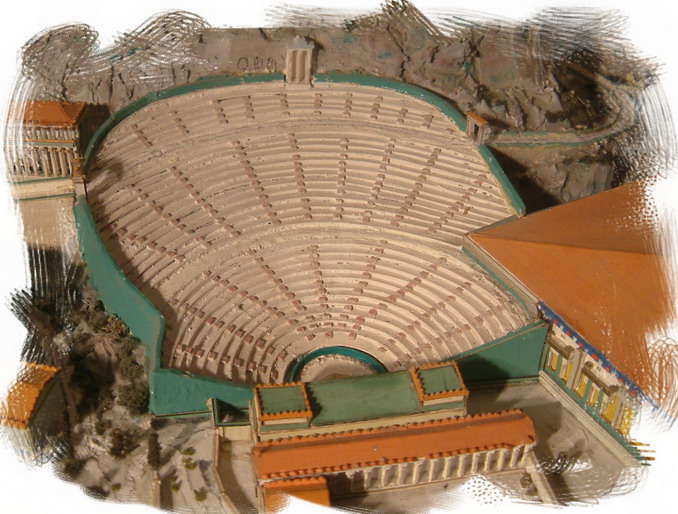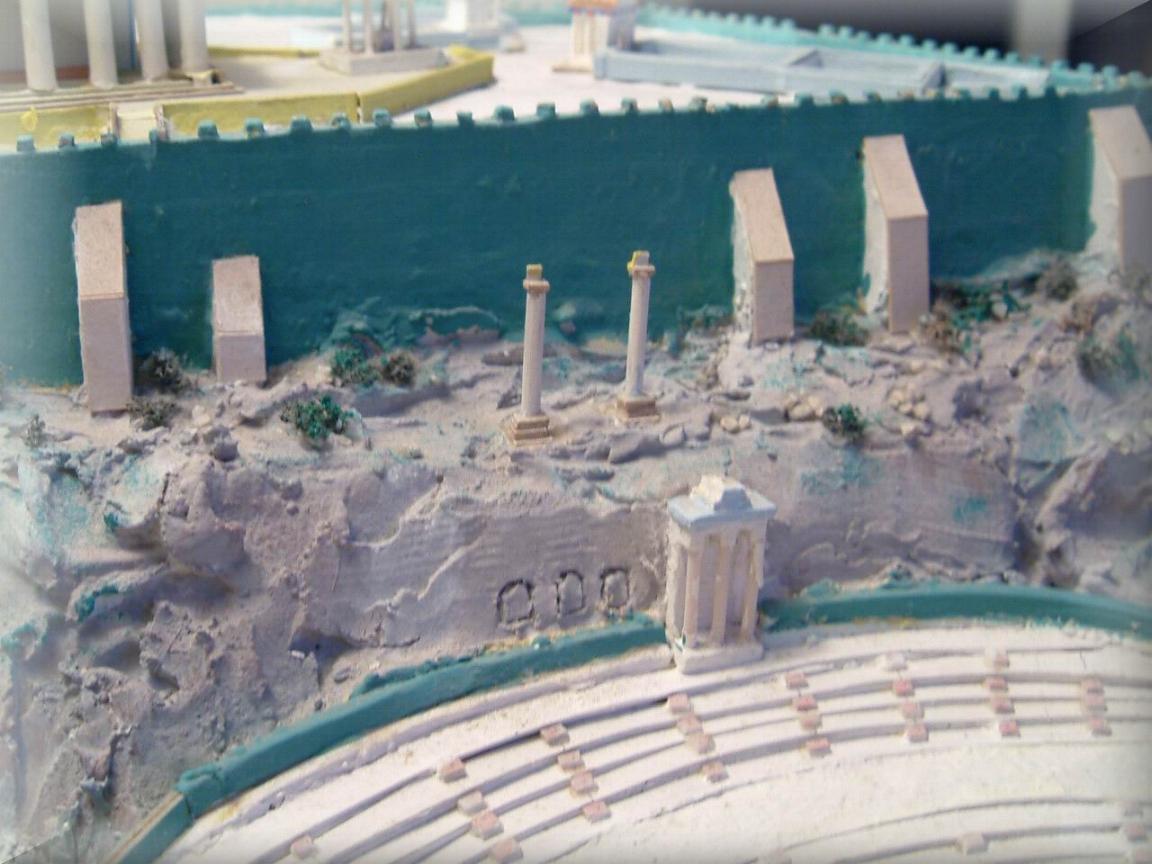Last, the
proscenion (stage) was composed of a rectangular hall,
with a length of 46 meters by 6.50 meters width, with two projecting side-wings (
25).
The last alteration is dating from the Roman period, where the front of the stage was pushed until the edge of the
cavea.
Thus, the theatre of Dionysus ended up by looking like a Roman theatre, and the
orchestra
was used for gladiators fights and nautical games.






